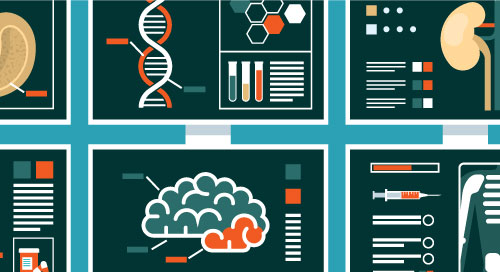A Prescription for Healthcare Technology

Public and private organizations around the world have had to quickly reevaluate priorities and goals to provide critical care and safety where it’s needed most.
In previous decades, when technology was less integrated into our lives, the resources of Silicon Valley and other tech hubs might have had a smaller role to play in developing new strategies at every level to combat a global pandemic. This is not that time.
Companies across a wide range of industries have been working together to share and leverage data on how to best deliver response and recovery solutions on a number of fronts. This is especially true across the healthcare segment, and the results have been encouraging.
Maximizing the Benefits of Health Tech
Hospitals have been pressed to rapidly adopt telehealth tools and technology, deploying them despite difficult circumstances. A recent webcast featuring Emma Fauss (PhD, MBA, and CEO of Medical Informatics Group), Kevin Phillips (VP, Product Management and Marketing, Capsule Technologies), and Bryce Olson (Global Strategist, Health and Life Sciences, Intel) dives into this topic and focuses on what we can learn from these challenges as they have played out to date.
Beyond this specific webinar, there are many examples of companies maximizing the benefits of technology in healthcare. It’s particularly important right now to make patient experiences as frictionless as possible, to maximize effective information sharing among clinicians, and to keep operations as secure as possible. Choosing partners that can minimize error rates is critical to that effort.
AI Is Essential to Health Tech
AI and robotics have important roles to play in a number of different use cases and scenarios. Companies are pivoting to deploy robots in the field, freeing up staff to handle other important tasks. Robots are performing a number of tasks—everything from helping ICU patients keep in touch with loved ones to carrying loads of essential supplies throughout a hospital.
New diagnostic analysis tools can combine data from multiple separate ICU wards to create a single “virtual” ICU, allowing patients in multiple areas to be monitored from a single, central location. As an added benefit, this “vICU” provides real-time data analytics on the prognosis and history of each individual patient when and if those records are required.
AI-driven alarm-monitoring tools can make sure that certain staff are alerted only when absolutely necessary. Alarm fatigue has been a longtime problem. Advanced technologies are enabling more intelligent systems that can make false alarms a thing of the past. Medical imaging technologies have advanced substantially in recent years. But the process of identifying harmful biological structures within these images is still a complex and time-consuming process—even for highly trained specialists. In response, many healthcare organizations are now applying AI at the edge to medical image analysis. Leveraging AI models trained against data from hundreds of thousands of patients can drastically improve the speed and accuracy of diagnosis.
The world of healthcare? It’s in the middle of a rapid transformation, and tech like AI and computer vision are behind-the-scenes
powering it.
Computer Vision Guides the Way
There are areas in the healthcare industry that, while critically important, have traditionally used low-tech, high-cost remedies. One of the most common—fall prevention—is an area where computer vision systems can be deployed to reduce the rate of falls and their potential injuries. This doesn’t just protect patients—it protects nurses and orderlies as well, who may themselves be injured while attempting to help patients.
And while the overall impact of augmented-reality tools in medicine is more general, the medical industry is making great strides in creating heads-up displays that give doctors real-time data while examining patients or even performing surgery. Virtual reality technologies have been adapted to give doctors a real-time view of patients’ internal anatomy—or guide patients through a journey of their own.
Improved self-care options are another effective way to more efficiently allocate healthcare resources. By enabling patients to measure their own vitals—blood pressure, temperature, weight, O2 saturation level—objective data can be combined with self-reported medical problems and flagged to a professional for follow-up as needed.
Gain More Value From Data, While Keeping It Secure
In this era of uncertainty, patients need the peace of mind that their personal medical data is kept private. Blockchain technology is one potential way to accomplish this goal, creating an “immutable ledger” of data that can be kept secure as ransomware attacks are also on the rise and targeting healthcare facilities.
Cloud-based platforms can aggregate disparate data from a range of medical devices and make it collectively more accessible to the experts who need it. Currently, up to 80 percent of data is considered to be essentially “dark”—it may exist, but it can’t be accessed in an effective or timely manner. New projects to unify that data and make it accessible to clinicians more quickly can improve the treatment options available to each patient.
Advancing Healthcare with Technology
Healthcare systems around the world and the professionals that comprise them face unprecedented challenges. The latest technologies and new innovations play a most critical role in tackling these adversities—with solutions for today and well into the future.
Eyes powered by computer vision do not tire. Alarm systems monitored by AI do not need to rest. A patient and caregiver who can use telehealth for diagnosis and even treatment free up medical staff and keep people safe. Improving outcomes via remote care can bring peace of mind for patients and their families.
From the life science lab to the hospital bedside and beyond, AI, computer vision, and other amazing technologies are also “essential workers” in empowering huge advancements in healthcare.